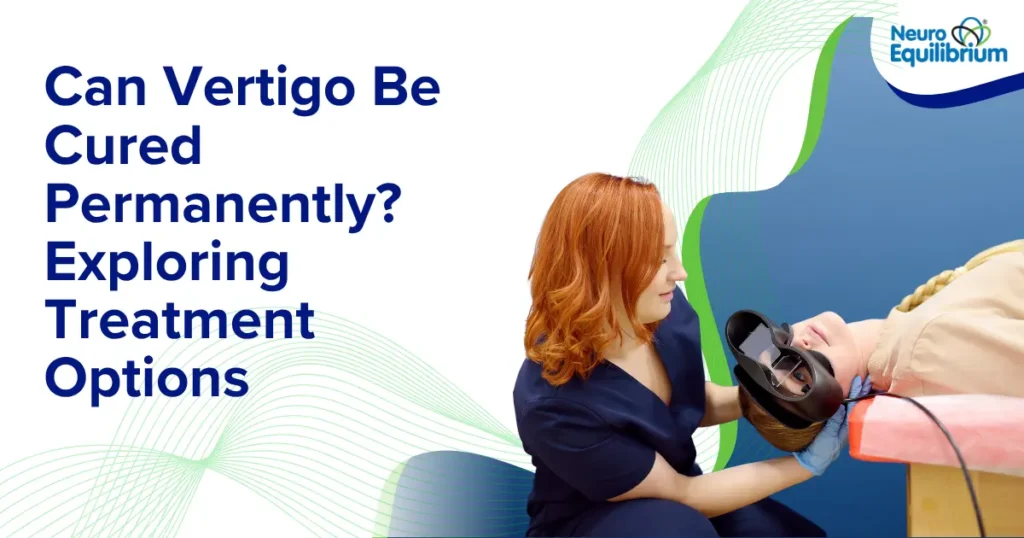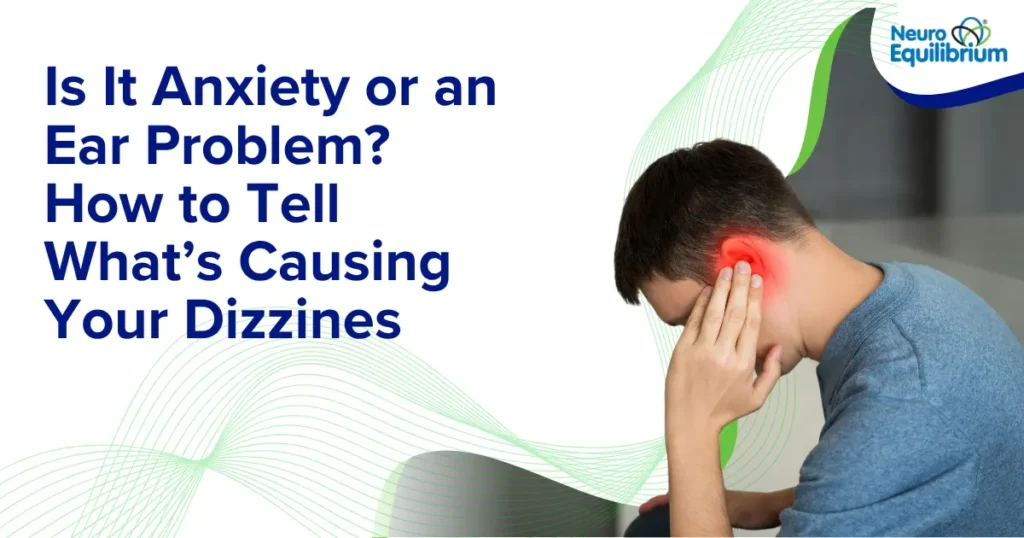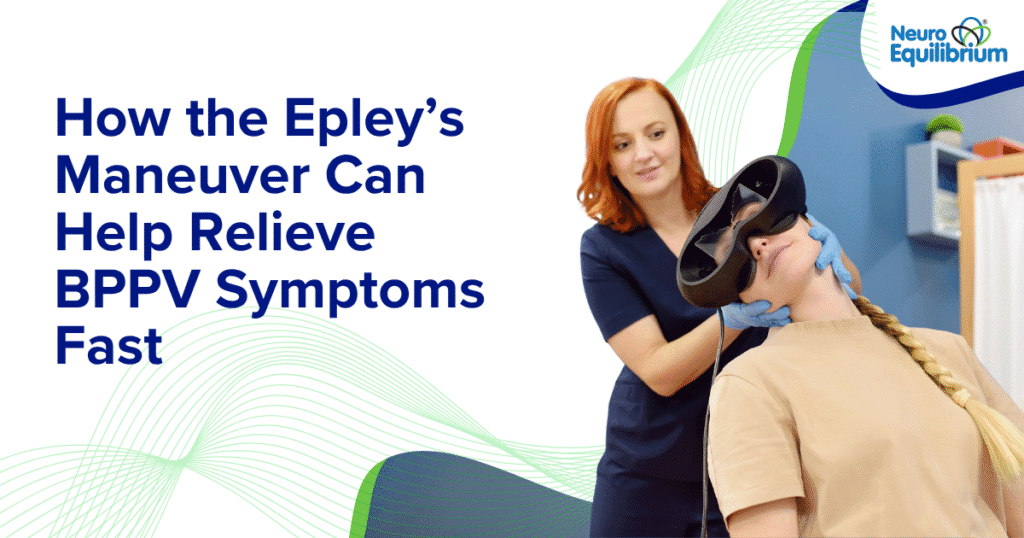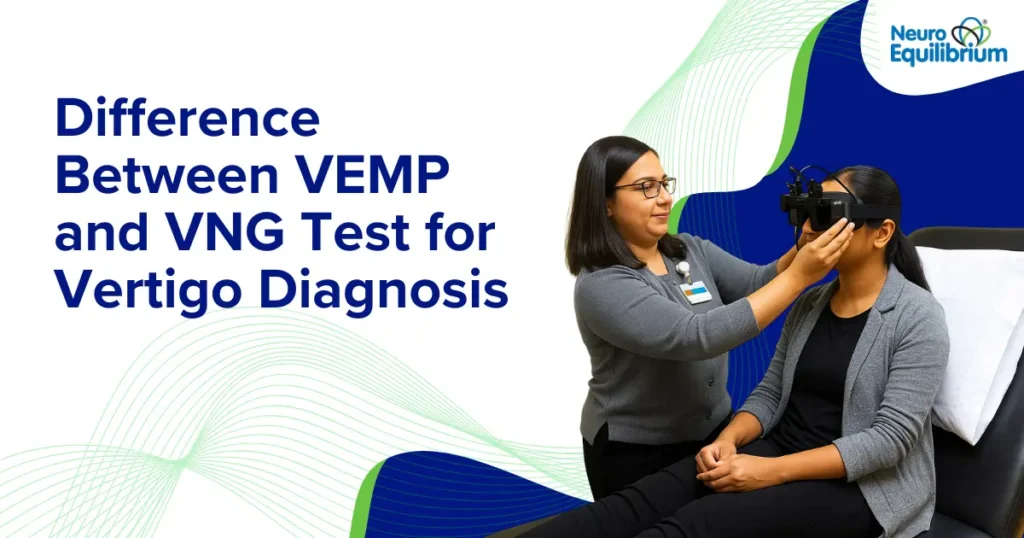Vestibular disorders are health issues occurring from an illness, inflammation, infection, or injury of the body’s vestibular system. There are different types of vestibular disorders, and they can cause overwhelming vertigo, dizziness, and other symptoms, which cannot be seen and only be felt. For this reason, your close friends or relatives are not able to understand your state of condition.
A major challenge is diagnosing and treating vestibular disorders is not always straightforward. It is because they can affect an individual in different ways. For such reasons, it becomes vital to know the important facts about vestibular disorders.
These facts about vestibular disorders share knowledge and intend to offer educational support to those who may be experiencing this problem but are still unaware.
Know More About Vestibular Disorders:
- What are Vestibular Disorders? – Types and Symptoms
- How Vertigo Exercises Help Cure Vestibular Disorders?
- Vestibular Rehabilitation Exercises & Therapy
So, let’s have a quick glance.
Top Facts about Vestibular Disorders
- The term ‘vestibular’ refers to the balance system of the inner ear. We can achieve good physical balance with the proper balance of our inner ear, eyes, brain, and muscular-skeletal People are considered healthy if their inner ear balance system is paired properly.
- Vestibular disorders can occur from inner-ear infections. Such infections can occur because of a virus, a brain injury, auto-immune causes, reaction of certain antibiotics, aging, and migraine.
- Individuals suffering from vestibular disorders can experience one or more symptoms like fatigue, dizziness, unsteadiness, jumping vision, hearing loss, vomiting, and tinnitus, which is ringing sound in the ears.
- More than 35% of adults and elders experience vestibular disorders at some point in their lives.
- BBPV or Benign paroxysmal positional vertigo is one of the most common causes of positional vertigo. It is a sudden feeling of swaying or spinning and occurs when tiny calcium crystals in one part of the year move to a place where they must not be.
- Individuals with vestibular disorders can suffer from cognitive impacts, like poor concentration, difficulty in recalling things, difficulty reading printed text, as well as impaired mental stamina.
- Labyrinthitis is an inner ear infection and happens due to inflammation of a fragile structure within the inner ear known as the labyrinth. This condition affects your hearing, balance, as well as causes pus or fluid to come from the ear.
- A person experiencing a viral infection like measles or chickenpox can experience vestibular neuritis. This disorder affects the nerve transferring sound and balance information to the brain from the inner ear.
- People suffering from vestibular disorders can experience sudden attacks of tinnitus, vertigo, hearing loss, or feeling of fullness at any time. This occurs because of excessive deposit of fluid in the affected ear.
- It is possible to ease vestibular disorders attacks by making certain lifestyle changes, such as cutting down on caffeine, salt, and alcohol.
- Perilymphatic fistula or PLF is a defect between the fluid-filled inner ear and middle ear. Some people are born with PLF and can experience hearing loss or dizziness. This defect can result in vestibular disorder, but it is possible to cure the defect through a surgical process.
- Acoustic Neuroma is a tumor in the inner ear and a form of the vestibular It is non-cancerous and expands slowly, but can squeeze your nerves, which control your balance and hearing. In severe cases, a neuroma can even numb the affected side of the face.
- There are a few drugs that can damage the inner ear, while there are others that connect the inner ear to the brain. Such types of drugs can cause hearing loss, and the problem may get resolved when you stop taking the drug or chemical.
- The bony, narrow canals within the inner ear that connects to the skull are known as vestibular aqueducts. If such ducts get larger, they can result in hearing loss. The cause of this issue is not clear, but certainly, it occurs because of genetic disorders.
- There is no proven cure for enlarged vestibular aqueducts. Hence, the finest way is to safeguard hearing is to avoid contact sports or activities that can result in a head injury. Also, individuals suffering from this problem must stay away from activities involving sudden pressure changes, like scuba diving.
- Vestibular migraine is one of the common forms of the vestibular It is a condition where the brain transmits incorrect signals to the balance system. As a result of this condition, one can experience a severe headache, sensitivity to sound or light, dizziness, hearing loss, and ringing sensation in the ears. In severe cases, people may also experience blurred vision.
- It is possible to suppress a vestibular migraine with antidepressants, but this is not the ultimate cure of the problem.
- When you move in a boat, plane, or anything else, which is new to you, your brain takes some time to adapt to this feeling. However, sometimes you may get stuck in the new motion and eventually feel like swaying or spinning even after stopping. This condition gets corrected in a few But if the condition lasts for days or weeks, then it can be because of a vestibular disorder.
- The severity and type of vestibular disorder symptoms may vary considerably and can be difficult and frightening to describe. Individuals suffering from the vestibular disorder are perceived as lazy, inattentive, highly anxious, or attention seeking.
- People suffering from vestibular disorders may find it difficult to work in school or office. They may even find it difficult to get out of the bed in the morning.
- Symptoms of the vestibular disorder may prevail even while sitting still in particular positions.
- If you have difficulty maintaining a straight posture, your head is tilted to one side, you lack tendency to hold or touch onto something when standing, lack tendency to look downward, find it difficult to walk in the dark, or have joint and muscle pain along with imbalance, then this is a condition of vestibular disorder.
- Vestibular disorder can affect the vision of a person. Such individuals find it difficult to track or focus objects with their eyes. They may find objects to bounce, float, blur, or jump.
- Vestibular disorder can result in discomfort among individuals from busy environments like the crowd, traffic, patterns, and stores. Such people even develop sensitivity to glare, light, fluorescent lights and flickering or moving lights.
- If a vestibular disorder affects your vision, then it can lead to sensitivity to computer monitors, digital televisions, poor depth perception, enhanced night blindness, and extreme discomfort while focusing at a distance.
- Sudden loud noises can increase symptoms of imbalance, vertigo, or dizziness.
- Cognitive vestibular disorder is a condition that results in difficulty concentrating. Such people can get conveniently distracted and experience short-term memory lapses, forgetfulness, difficulty understanding conversations, disorientation, confusion, and physical as well as mental fatigue.
- If a vestibular disorder affects your psychological ability, then it results in loss of self-confidence, self-reliance, lack of self-esteem, depression, panic, anxiety, and sometimes social isolation.
- VRT or Vestibular Rehabilitation Therapy is a successful treatment for vestibular disorders. Such therapy has shown great improvement in patients experiencing this problem. The improvement rate is upto 70-80%.
- Performing certain low-impact exercises on a routine basis can help improve the balance. Tai Chi, yoga, and even using Wii video game with Wii balance board can help enhance the vestibular disorders to a great extent.
- Vestibular disorders offer an invisible chronic illness. Since they are invisible so, sometimes others may assume that patients are faking the symptoms.
- The early research on vestibular disorders was introduced from NASA’s study on returning astronauts in the space.
- A vestibular disorder may be present even when there are no severe or obvious symptoms. It is vital to note that most of such individual symptoms can be caused by other unrelated medical conditions. Hence, the condition must be discussed with a health professional so that it is possible to take appropriate treatment and cure the condition.
You can share these important facts about vestibular disorders to let people recognize this problem, which might be affecting their daily lifestyle. Also, there are new diagnostic tools and accessible treatments available for vestibular disorders. So, it is very important to get an in-depth diagnosis of the problem. To know more about the various diagnosis and treatment options for vestibular disorders you can visit the experts at NeuroEquilibrium Clinics across India.
References:
- https://www.webmd.com/brain/vestibular-disorders-facts#1
- https://vestibular.org/understanding-vestibular-disorder/symptoms
- https://vestibular.org/sites/default/files/BAW_2015/Top%20Ten%20Facts%20about%20Vestibular%20Disorders_7.7.15.pdf
- https://picnicwithants.com/2015/09/16/a-few-facts-about-vestibular-disorders-with-comments-about-me/
- https://seattledizzygroup.org/2012/09/21/10-things-you-didnt-know-about-the-balance-vestibular-system/
















